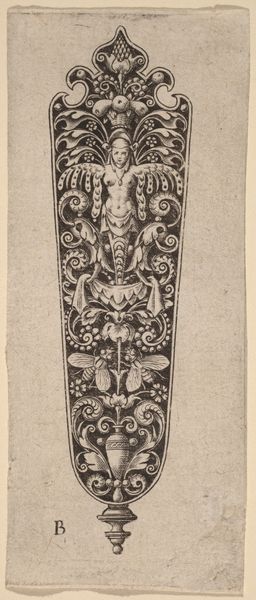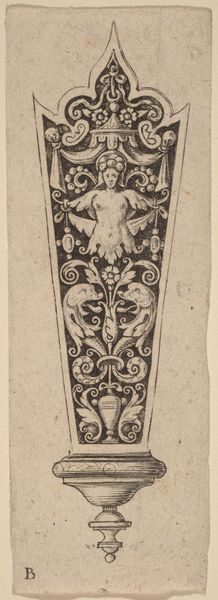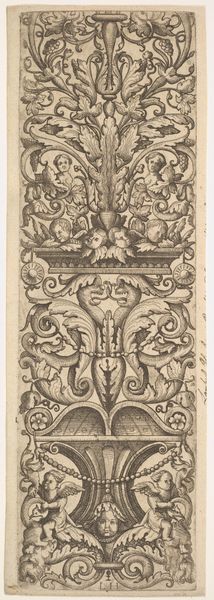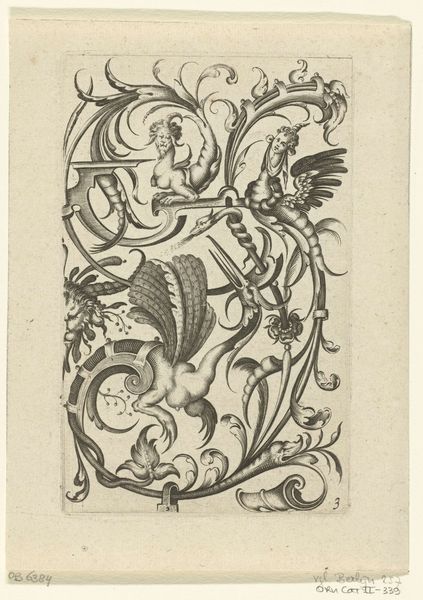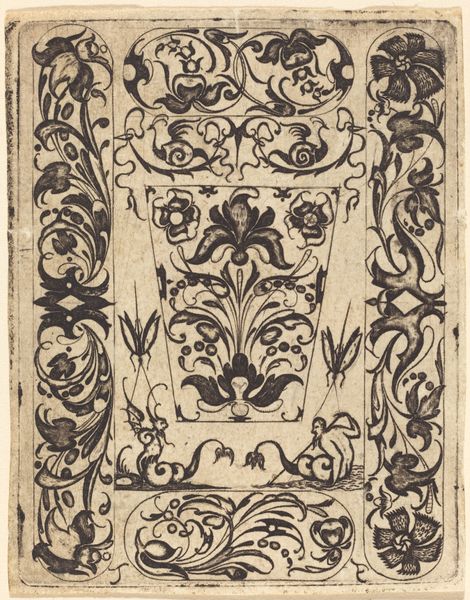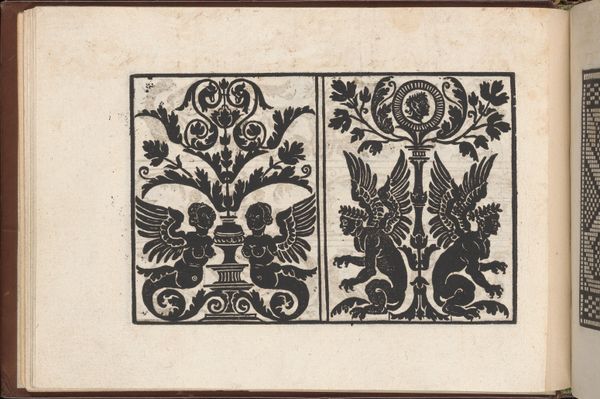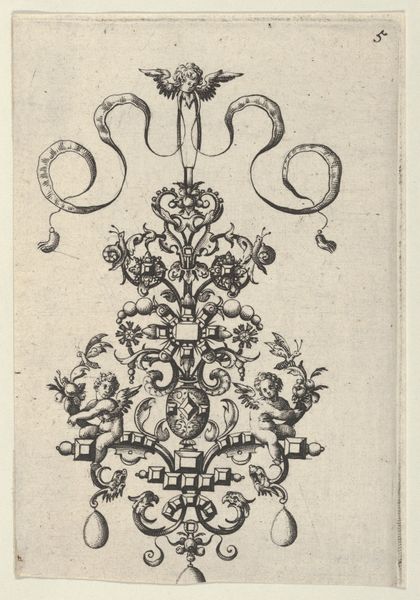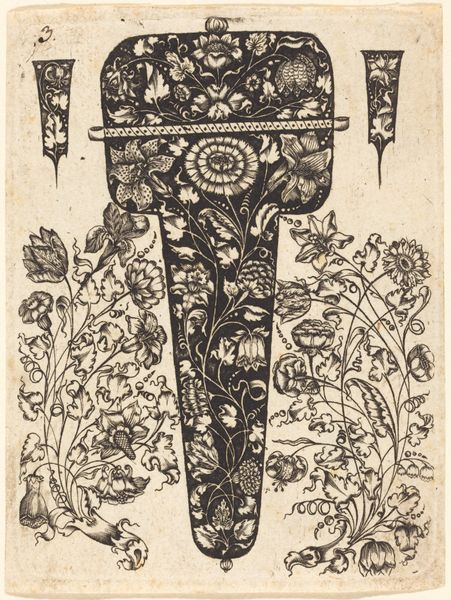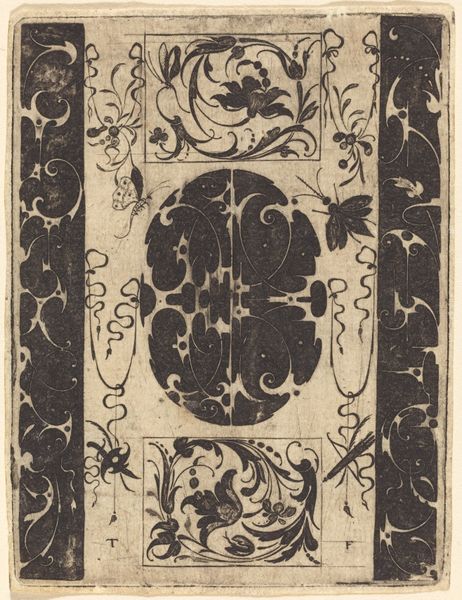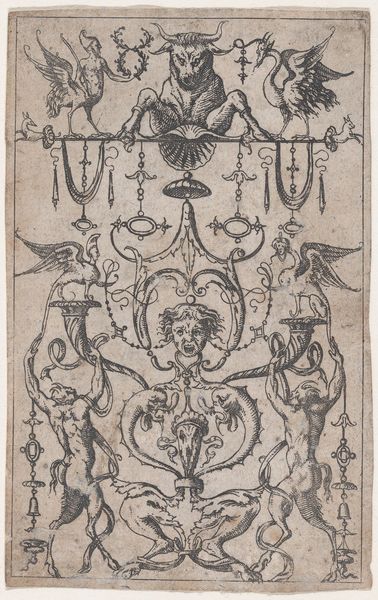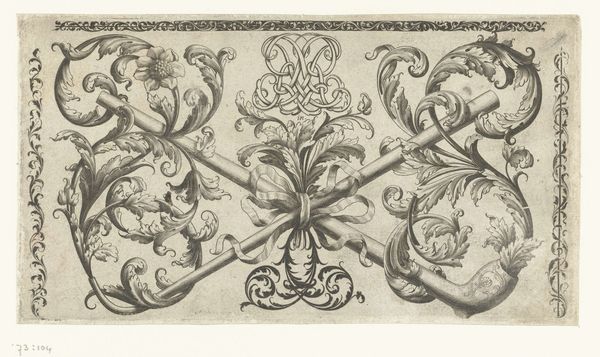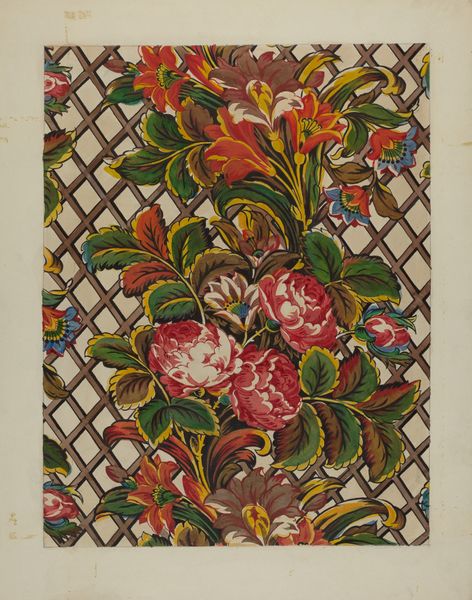
drawing, ornament, print, paper, watercolor, ink
#
drawing
#
ornament
#
medieval
#
ink painting
# print
#
paper
#
watercolor
#
ink
Dimensions: Overall: 7 7/8 x 3 11/16 in. (20 x 9.3 cm)
Copyright: Public Domain
Editor: Here we have a fifteenth-century "Panel of Ornament" – "Schr. 2006m" as it's called – an anonymous work combining drawing, watercolor and ink on paper, housed here at the Met. It strikes me as a rather curious and almost playful piece. What are your initial thoughts, looking at this work? Curator: Playful indeed. But let’s also consider the broader context: medieval society, deeply structured by hierarchy and religion. Ornament wasn't mere decoration; it was a visual language. Does the duality of design here, with its human-like face versus the geometric shapes, echo the tensions of that era? Consider the mask, could it represent marginalized voices or the anxieties of the period? Editor: That's a fascinating point! I hadn't considered it as a reflection of societal tensions, I was just enjoying the image as I saw it! Could you expand a little more? Curator: Think about the role of the artist. Why would they choose ornament, a seemingly "minor" art form? Could it be a subtle act of resistance, a way to express ideas outside the dominant narratives of religious or aristocratic art? The ink drawings, the floral watercolors... are they echoing the voices, silenced perhaps elsewhere, here claiming visibility in the texture and detail? Who was allowed to produce, sell or own these images? Editor: So you see the artwork existing within a wider framework, using its small scale almost as a strength? Curator: Precisely. And what if we read the naturalistic elements – the flowers, the leaves – through a feminist lens? Are they symbols of fertility, life, a celebration of the feminine in a patriarchal world? Editor: I never thought a decorative panel could contain such layers. I came expecting simple beauty. Curator: And there is beauty, but it’s beauty interwoven with history, power, and the quiet voices of a distant time. Seeing art, is so often also about how we interpret the surrounding social structures, class relations, and politics.
Comments
No comments
Be the first to comment and join the conversation on the ultimate creative platform.
